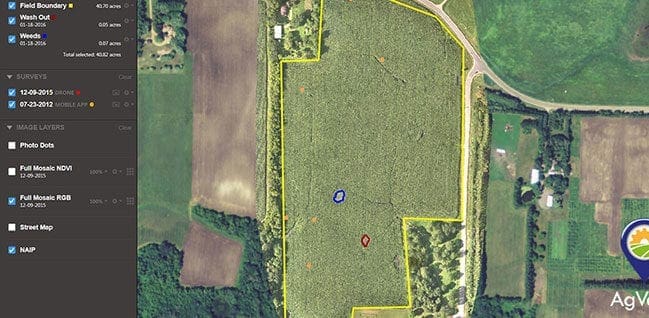 Most of us have seen at least one drone this summer. They are everywhere. Now, some suggest drones will change how we produce and grow food globally.
Most of us have seen at least one drone this summer. They are everywhere. Now, some suggest drones will change how we produce and grow food globally.
The build-up to the everyday use of drones hasn’t had a significant impact on agriculture, at least, not yet. Experts believed for a long time that commercial use of drones would be deemed hazardous and difficult to properly regulate.
But this year, the winds of change have shifted in favour of drones. In an unprecedented move, the U.S. Federal Aviation Administration recently approved an entire fleet of 324 drones for commercial use, operated by a private partnership that includes companies like IBM, Boeing, the American Red Cross, and the American Farm Bureau. This group of influential organizations is looking to develop business in search and rescue efforts and – yes – agriculture.
| RELATED CONTENT |
| The new era in food sales, from drones to virtual restaurants By Sylvain Charlebois |
| How to win the war against global famine By Roslyn Kunin |
| Plant diversity minimally affected by intensive cattle grazing: study By Adrianna MacPherson |
Once regulators figure out a way to make these unmanned aerial devices safer for the broader public, it is just a question of time before drones become an integral part of sound farm management practices.
Data access for farmers would be greatly enhanced. Drones can aid in monitoring crop health, insect problems and water irrigation issues, anything that needs to be assessed and helps increase yields. As for livestock, drones can be effective for monitoring cattle and security.
Drones are already astonishingly affordable for commercial use. Some can be purchased for $700, while higher quality models fetch $20,000 to $30,000. Most are equipped with infrared cameras, sensors and other technology controlled by someone on the ground. As technology advances, range and cargo capacity will only improve.
A group representing robotics and drone manufacturers recently published a report stating 80 per cent of all drones over the next decade or so will likely be used to support agriculture in one way, or another.
Financially and geographically, the business case to support the proper use of drones in agriculture is robust. It reduces the need for farmers to physically go into the field and damage crops in the process. Also, surveillance can be achieved below cloud cover. Therefore, drones have the upper hand over satellite imaging which, at times, can be obstructed by storm systems.
Drones can also better support the research many plant scientists conduct on a regular basis, making samples easier to collect. But the robotic/drone group’s most important argument is that remotely located farming operations are convenient for drone usage when considering public safety. Privacy can also be a significant issue.
Drones are making a name for themselves in enabling agriculture to become more efficient and precise. But it does not stop there when it comes to food.
Amazon, the online retailer, is on a mission to make grocery delivery by drones possible. This summer, the Seattle-based company presented a regulatory framework which would accommodate localized, low-speed delivery at 61 metres, or lower. That space would exclude airports and other areas susceptible to higher air traffic and obstacles.
Amazon argued that the uptake of drones means that regulation will need to change and adapt, without generating costs for commercial users. It even presented an audacious road map to allow computers to look after air traffic generated by drones. Flying drones would immediately adjust their path should they encounter another flying object, or even wildlife.
It is unclear when, or if, regulators will respond to Amazon’s vision for home delivery. But with better and more reliable technology, anything is possible.
It may take a while before drones deliver pizzas or groceries to your doorstep, but the technology is making some inroads within the food chain. It is indeed interesting that many farmers, often described as being traditionalists and technophobes, are using a technology that highly sophisticated enterprises like Amazon cannot yet adopt. This is a clear indication that the era of big data in farming is upon us.
Dr. Sylvain Charlebois is senior director of the agri-food analytics lab and a professor in food distribution and policy at Dalhousie University.
Sylvain is a Troy Media Thought Leader. For interview requests, click here.
The opinions expressed by our columnists and contributors are theirs alone and do not inherently or expressly reflect the views of our publication.
© Troy Media
Troy Media is an editorial content provider to media outlets and its own hosted community news outlets across Canada.

